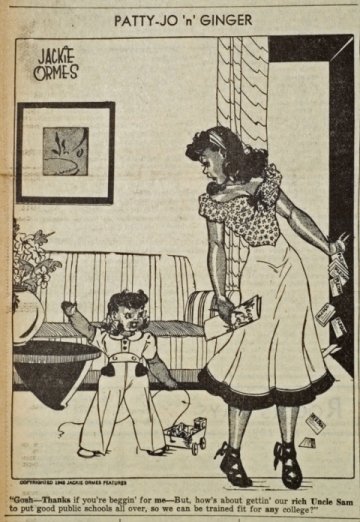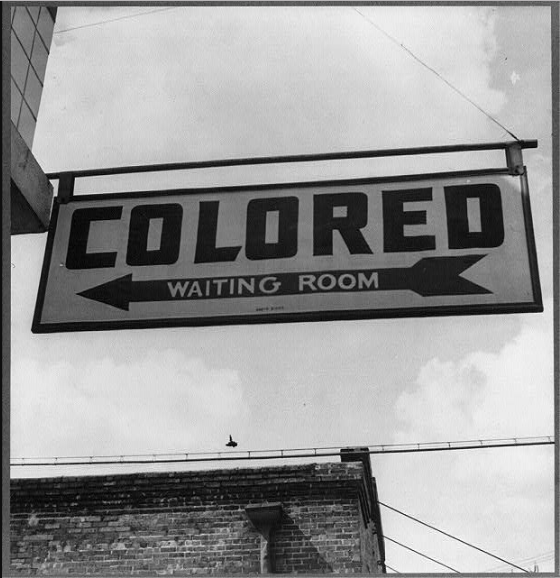
June 26, 1948. Caption for this comic states: "Gosh—Thanks if you're beggin' for me—But how's about getting our rich Uncle Sam to put good public schools all over so we can be trained fit for any college?" Source: Jackieormes.com.
Patty-Jo 'n' Ginger
Through her comics, Jackie Ormes portrayed real-life issues that African-Americans dealt with at the time, such as racial segregation and discrimination. For example, in the comic to the left, Patty-Jo asks Ginger why the government does not use their surplus of money to build quality public schools everywhere so anyone can get an education and have a chance to go to college. Ormes also skillfully symbolizes this message through the "Negro College Fund" booklet and cards that say "Pledge" in Ginger's hands. This message breaks barriers by passive-aggressively calling out the government for giving black communities lower-quality schools, which is not only discriminating, but also treating them as if they are second-class citizens. In order to professionally discuss these topics in this comic series, Ormes skillfully made her “Patty-Jo” character a little girl, which adds a touch of empathy and comedy to these otherwise controversial subjects.

